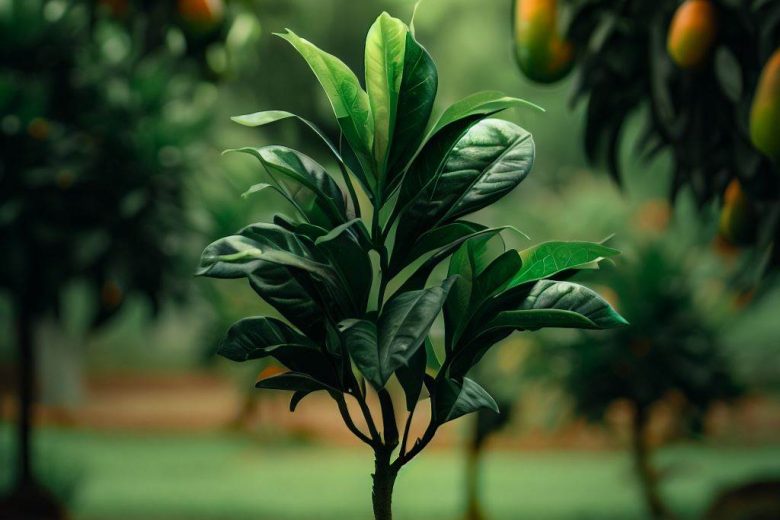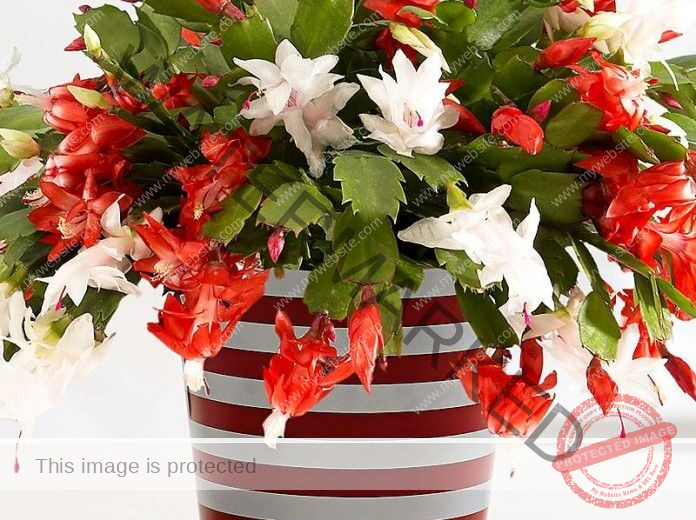Gardening in Zone 3 doesn’t have to be limited to cold-resistant vegetables. You can cultivate a variety of delicious fruit trees that thrive in these conditions. Imagine the joy of plucking fresh, ripe fruits from your very own garden during the summer months. In this guide, we’ll provide you with insights into selecting, planting, and caring for fast-growing fruit trees in Zone 3.
In Zone 3, a remarkable array of 30 fast-growing fruit trees defy the cold, offering a diverse bounty of deliciousness. Each of these trees has its unique charm and flavor profile, making them wonderful additions to your Zone 3 garden. From juicy peaches to plump plums, there’s no shortage of options to choose from when creating a diverse and fruitful garden paradise.
30 Fastest Growing Fruit Trees Zone 3
1. Honeycrisp Apple Tree
The Honeycrisp Apple Tree stands out for its mouthwatering, sweet-tart flavor and exceptional crispness. Its apples are perfect for fresh eating, baking, and even making cider.
Read Also: 40 Fast Growing Fruit Trees Zone 2
2. Dwarf North Star Cherry Tree
Ideal for compact spaces, the Dwarf North Star Cherry Tree may be small in size but produces abundant clusters of tangy cherries that are perfect for snacking and culinary creations.
3. Harrow Sweet Pear Tree
The Harrow Sweet Pear Tree brings forth lusciously sweet pears with a smooth texture, making it a delectable addition to desserts, salads, and preserves.
Read Also: 20 Fast Growing Fruit Trees Zone 7
4. Brookgold Plum Tree
With its golden fruits, the Brookgold Plum Tree offers a touch of elegance to any landscape, and its plums are prized for their sweet and juicy flavor.
5. Reliance Peach Tree
Resilient against the cold, the Reliance Peach Tree offers succulent peaches that can be enjoyed fresh, turned into jams, or used for baking.
Read Also: 20 Fast Growing Fruit Trees Zone 8
6. Moorpark Apricot Tree
The Moorpark Apricot Tree is renowned for producing apricots that are rich in flavor and perfect for creating delectable preserves and desserts.
7. Nanking Cherry Tree
Apart from its tasty cherries, the Nanking Cherry Tree also serves as an ornamental shrub, adding aesthetic appeal to your garden.
Read Also: 30 Fast Growing Vegetables in Winter
8. Pembina Plum Tree
The Pembina Plum Tree produces plump and delicious fruits that are not only enjoyable fresh but also suitable for jams and baking.
9. Contender Peach Tree
The Contender Peach Tree offers versatile peaches that can be enjoyed as a juicy snack or utilized in various culinary endeavors, from canning to grilling.
10. Rosy Glow Apple Tree
Boasting both aesthetic charm and flavorful apples, the Rosy Glow Apple Tree brings a touch of beauty and taste to your garden.
Read Also: 20 Fast Growing Fruit Trees Zone 6
11. Ure Pear Tree
The Ure Pear Tree’s ability to thrive in cold climates ensures a consistent supply of sweet, juicy pears that can be enjoyed fresh or added to salads.
12. Crimson Passion Cherry Tree
With its striking deep red cherries, the Crimson Passion Cherry Tree adds a burst of color and bold flavor to your outdoor space.
13. Mount Royal Plum Tree
The Mount Royal Plum Tree delivers a delicious harvest of purple plums, perfect for snacking, baking, and preserving.
14. Frost Peach Tree
As its name suggests, the Frost Peach Tree is remarkably cold-hardy, producing delectable peaches that can withstand chilly temperatures.
15. Dwarf Korean Apricot Tree
The Dwarf Korean Apricot Tree may be small, but its fruits are big on taste, with a delightful blend of sweetness and tanginess.
16. Evans Cherry Tree
Known for its abundant production of bright red cherries, the Evans Cherry Tree thrives in colder climates and offers a delightful blend of sweet and tart flavors.
17. Superior Plum Tree
True to its name, the Superior Plum Tree yields superior-quality plums with a rich taste and smooth texture, perfect for enjoying fresh or turning into jams.
18. Redhaven Peach Tree
The Redhaven Peach Tree is celebrated for its early ripening and juicy, golden-fleshed peaches, making it a favorite for summertime snacking.
19. Wealthy Apple Tree
This apple tree variety produces apples with a pleasant balance of sweetness and tartness, making it an excellent choice for both eating and baking.
20. Early Gold Pear Tree
The Early Gold Pear Tree lives up to its name by bearing beautiful golden pears that are not only visually appealing but also wonderfully flavorful.
21. Juliet Cherry Tree
The Juliet Cherry Tree produces cherries that are perfect for snacking due to their small size and sweet taste, making them a hit with both kids and adults.
22. Toka Plum Tree
Favored for its oval-shaped, reddish-brown plums, the Toka Plum Tree offers a rich and distinct flavor that’s perfect for fresh eating and cooking.
23. Harko Nectarine Tree
The Harko Nectarine Tree offers smooth-skinned nectarines with a delightful blend of sweetness and tanginess, making them a refreshing summer treat.
24. Prairie Sun Peach Tree
This peach tree variety boasts peaches with a beautiful yellow and red blush, and their juicy, flavorful flesh is a delight for the taste buds.
25. Zestar Apple Tree
The Zestar Apple Tree produces apples with a crisp texture and a lively combination of sweet and tangy flavors, making them a perfect snack.
26. Summercrisp Pear Tree
True to its name, the Summercrisp Pear Tree yields pears with a crisp texture and a refreshingly sweet taste, perfect for enjoying on warm days.
27. Cupid Cherry Tree
The Cupid Cherry Tree is a small and compact variety that produces adorable cherries, making it an excellent choice for smaller gardens.
28. Stanley Plum Tree
Known for its deep purple, freestone plums, the Stanley Plum Tree is a favorite for making jams, jellies, and delectable desserts.
29. Madison Peach Tree
The Madison Peach Tree offers juicy, freestone peaches that are easy to enjoy, whether eaten fresh or used in a variety of culinary creations.
30. Hardy Giant Apricot Tree
Closing our list is the Hardy Giant Apricot Tree, which lives up to its name by producing plentiful apricots that are both hardy and delicious.
Advantages of Fast-Growing Fruit Trees
Fast-growing fruit trees offer numerous advantages. They establish quickly, often producing fruits within a few years of planting. Additionally, their rapid growth helps them adapt to the shorter growing seasons and harsh winters of Zone 3.
Choosing the Right Location
Selecting an appropriate location for your fruit trees is crucial. Choose a spot with ample sunlight and good drainage. Ensure proper spacing between trees to allow for healthy growth and air circulation.
Preparing the Soil
Well-draining soil rich in organic matter is essential for the success of your fruit trees. Conduct a soil test to determine its pH and nutrient content. Amend the soil as needed to create the ideal growing environment.
Selecting the Appropriate Trees
Zone 3 offers a diverse range of fruit trees that can thrive. From the classic apple and pear trees to the more exotic apricot and plum varieties, you have a wealth of choices.
Planting and Caring for Zone 3 Fruit Trees
Once you’ve selected your trees, follow these steps for successful planting and care:
- Digging the Hole: Dig a hole that’s twice as wide as the tree’s root ball and of equal depth.
- Positioning the Tree: Place the tree in the hole, ensuring the top of the root ball is level with the ground.
- Backfilling: Fill the hole with soil, gently tamping it down as you go to remove air pockets.
- Watering: Give the tree a deep watering immediately after planting and regularly thereafter.
- Mulching: Apply a layer of mulch around the base of the tree to retain moisture and prevent weed growth.
Pruning Techniques for Optimal Growth:
Pruning is essential to shape your trees and encourage healthy growth. Prune during the dormant season to remove dead or diseased branches and improve airflow.
Protecting Trees from Harsh Winters
Shield your trees from winter’s wrath by wrapping their trunks with burlap and adding a layer of mulch around the base. This helps prevent frost cracks and rodent damage.
Common Pests and How to Deal with Them
Keep an eye out for common pests like aphids and apple maggots. Use organic pest control methods or introduce beneficial insects to keep these pests in check.
Harvesting and Enjoying Your Fruit
Harvesting times vary depending on the fruit type. Fruits like apples and pears should be gently twisted off the tree, while cherries and plums can be delicately handpicked.
Best Practices for Long-Term Tree Health
Regularly fertilize your trees with a balanced fertilizer to ensure they receive the necessary nutrients. Mulching, proper watering, and routine inspections are key to their longevity.
Best fast growing fruit trees zone 3
The best fast-growing fruit trees for Zone 3 encompass a delightful variety, including cherry, apple, pear, plum, and peach trees, among others. These trees not only thrive in cold climates but also offer delectable fruits, bringing both beauty and bounty to your garden
Can I grow tropical fruit trees in Zone 3?
While tropical fruit trees are more suited for warmer climates, there are hardier varieties that you can experiment with in Zone 3, such as cold-hardy citrus trees and figs.
When is the best time to plant fruit trees in Zone 3?
Fall is generally the best time to plant fruit trees in Zone 3. This gives them time to establish their roots before the harsh winter conditions.
How often should I water my newly planted fruit trees?
Water your newly planted fruit trees deeply about once a week, ensuring the soil remains consistently moist but not waterlogged.
What can I do to protect my fruit trees from deer and rabbits?
Consider using physical barriers like fences or netting to deter deer and rabbits from accessing your fruit trees. Additionally, applying repellents or scent deterrents can help keep these animals at bay.
Are there any dwarf varieties of fruit trees for smaller spaces?
Yes, many of the mentioned fruit trees have dwarf or compact varieties that are well-suited for smaller gardens or even container planting. These options allow you to enjoy fresh fruits even with limited space.
Conclusion
In the face of Zone 3’s challenging climate, these 30 fast-growing fruit trees stand as a testament to nature’s resilience and adaptability. With their bountiful harvests and the joy they bring to your garden, you can transform your outdoor space into a fruitful haven, even in regions known for their cold winters, also, they offers not only delicious fruits but also unique attributes that make them well-suited for Zone 3 gardens. Whether you’re looking for a burst of color, exceptional flavor, or adaptability to cold climates, these fast-growing fruit trees have something special to offer.




